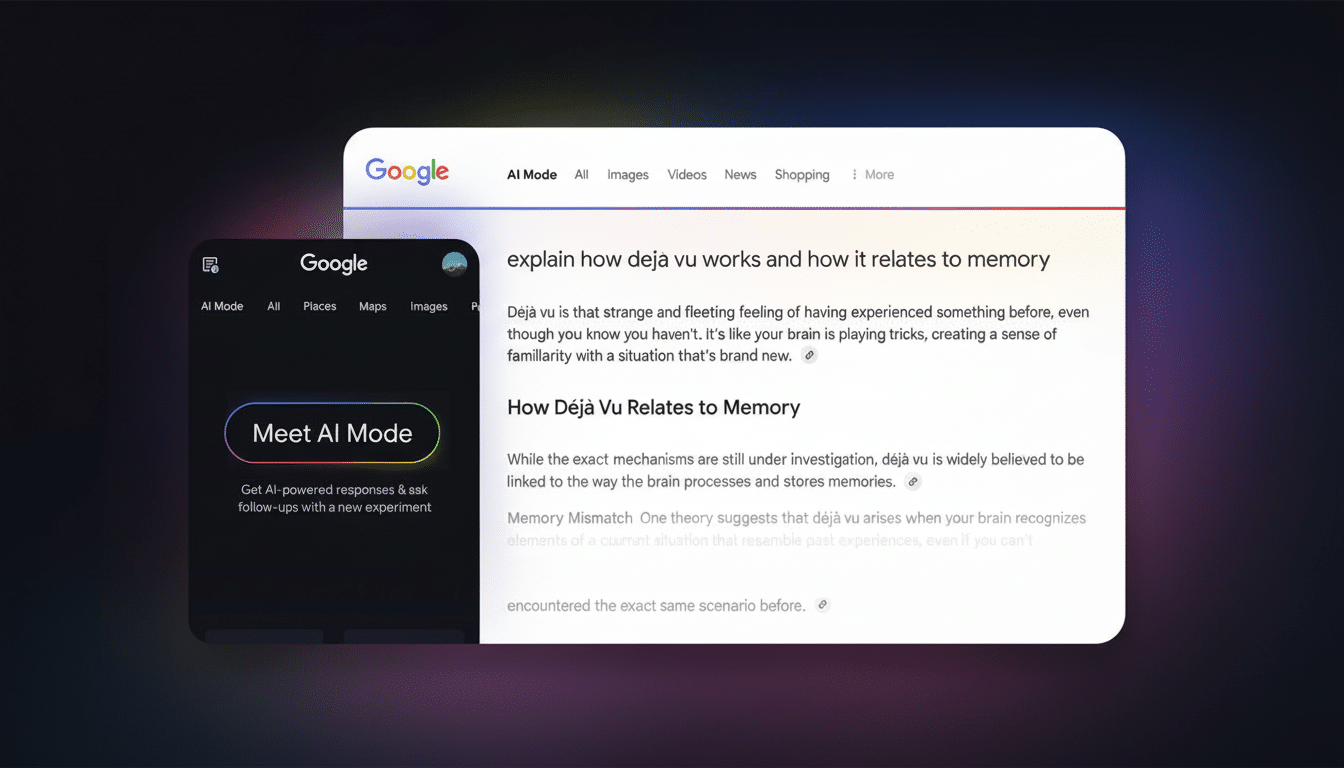Google is transforming Search into a tactile shopping tool. Shiny, AI-driven new features include one in the U.S. that will call nearby stores to check whether they have an item in stock and (with your permission) complete a purchase when prices drop. The release is across Google Search’s AI Mode and the Gemini app, suggesting a movement toward agentic AI that takes the grunt work. It does it all, from comparison browsing to transactions.
What Google Is Releasing in Search and Gemini
When in AI Mode, shopping question answers will now return price, review score, photo, and product availability information from the web all in one place. Depending on your question, you will see shoppable images or compact comparison summaries, and you can request side-by-side product matchups without opening a dozen new browser tabs.

And the Gemini app will receive similar treatment: product listings, comparison tables, prices pulled in from around the web, and guidance to where you can make your purchase. Google says these answers in Gemini are ad-free for shopping, though Search’s AI Mode may feature sponsored listings that are tagged as such to integrate “naturally” into the experience.
Let Google Do the Store Calling for You Instead
Search for a product “near me” and some results offered will display an option to Let Google Call.
Tap it, answer a couple of clarifying prompts (model, color, size, budget), and Google’s AI will call local retailers to verify availability and price and check if any promotions are on offer. The service cobbles together answers, then overlays inventory signals from other local retailers and pings you a summary by text or email.
The feature is rolling out across categories such as toys, health and beauty, and electronics. Google says its system is designed not to repeatedly call the same business, reveals that the caller is an AI, and offers businesses a chance to opt out. Only if retailers have correct hours and phone numbers in their business profiles can the system funnel customers effectively.
Agentic checkout and automated purchases on price drops
And Google is not just going from alerts to action. Once you turn on price tracking for a particular item in Search, you can establish parameters such as size, color, and maximum price. When it reaches your target price, you’ll receive a notification and have the option of Google handling the transaction on the retailer’s site with support for Google Pay.
Importantly: Google says the agent will also ask for permission before any order is placed, confirming purchase and shipping details first. The list of U.S. merchants eligible to participate includes Wayfair, Chewy, Quince, and select Shopify stores, with more to come as integrations roll out.

The impact on shopping: from discovery to purchase
The move from lists of links to structured, AI-generated answers collapses the entire funnel — discovery, evaluation, and purchase all crunched together into one spot. You might have asked for “quiet robot vacuums for carpets,” scanned through a ranked collection along with noise levels, prices, and reviews, added two to a compare list, and then let Google confirm in-store stock at local retailers if you need it today.
This is not Google’s first voice-forward automation; it follows in the footsteps of the company’s earlier Duplex technology, which booked restaurant tables via telephone. The new thing here is scope and breadth of commerce: instead of dialing on behalf of a human being, the agent is connecting online price intelligence with physical-world inventory and a clear road to pay.
Why it matters for shoppers and retailers
For consumers, it’s easy to see the value: less time on hold, clear comparisons of hot items, and faster buys before they run out online. Average online cart abandonment, frequently because of friction, has been sitting at around 70% for years — according to the Baymard Institute. For those who hit checkout, that button responds at exactly the right price, with details prefilled — and does so agently.
For merchants, the upside is demand with a filter and not having to field repetitive stock-check calls. But it also raises new concerns: the accuracy of inventory, how sponsored placements will appear in AI answers, and whether an AI caller fits into customer service workflows already in place. The goal is striking a balance of innovation and transparency, with clarity in labeling, consent-before-purchase rules, and the ability for consumers to opt out.
What to watch next for Google’s agentic shopping
Look for Google to expand the pool of eligible categories and merchants, expand integrations with Shopify, and test how well AI Mode mixes ads with organic listings. The company has other things on the roadmap, presumably including expansion outside of the U.S., more tightly integrating with Maps and Business Profiles, as well as more granular price-tracking controls.
If the approach works at scale, Google’s agentic shopping could rewrite how we shop for everyday goods — less browsing and waiting, and more buying with confidence from a single prompt. The future of e-commerce may be less about clicking and more about telling someone else to do it.

